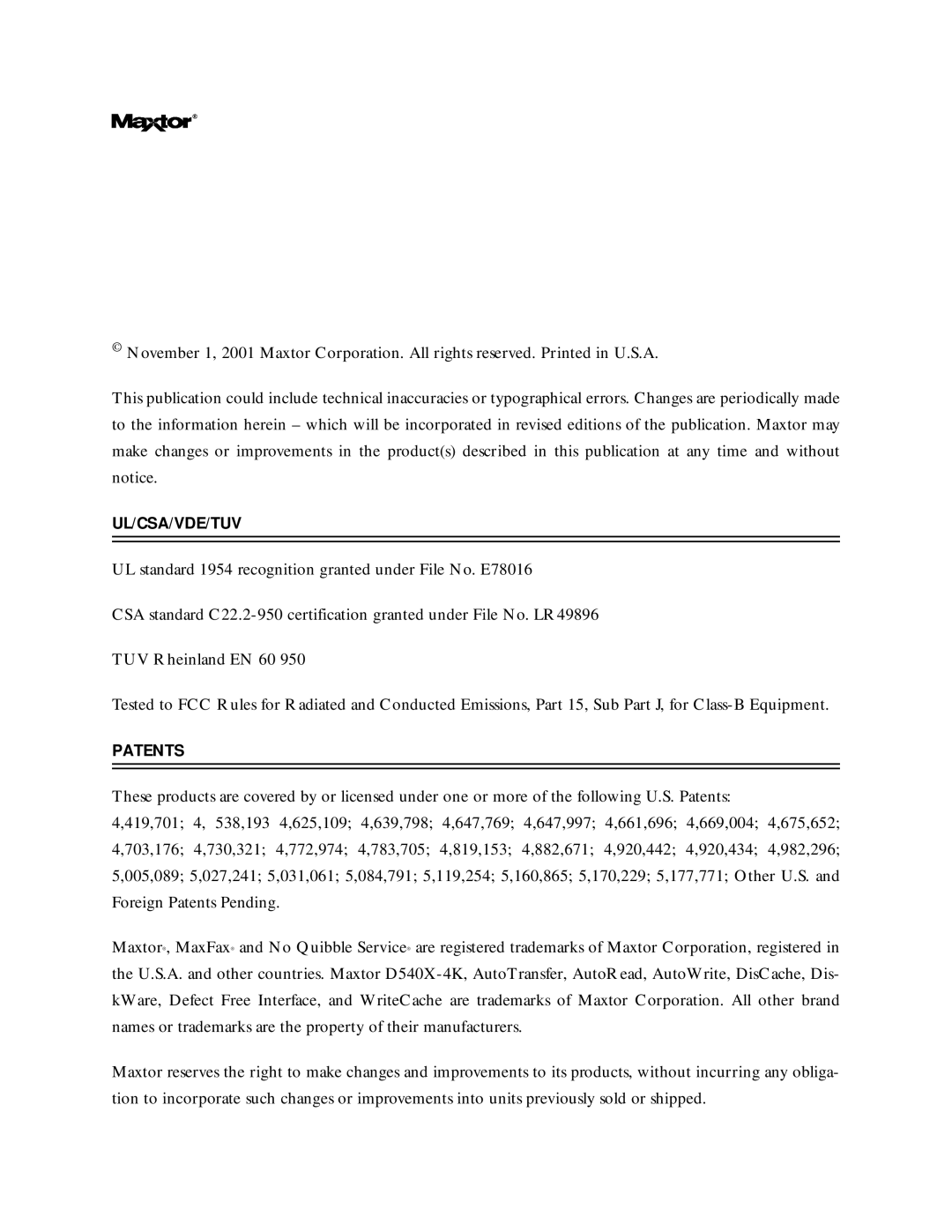D540X-4K specifications
The Maxtor D540X-4K is a notable hard disk drive that has made its mark in the world of computer storage solutions. Launched in the early 2000s, this drive was known for its high capacity and reliable performance, making it a popular choice among consumers and businesses alike.One of the main features of the D540X-4K is its generous storage capacity. With a range of models available, users could select from configurations starting at 40GB to larger sizes, accommodating a wide variety of storage needs. This capacity was particularly advantageous during an era when digital media was rapidly expanding, allowing users to store everything from documents and photos to videos and applications without running out of space.
The D540X-4K utilizes an IDE (Integrated Drive Electronics) interface, also known as PATA (Parallel ATA), which ensures compatibility with a broad spectrum of computers. This interface was standard at the time, making the drive accessible to a wide user base. The drive also supports ATA-100, providing data transfer rates of up to 100 MB/s, which was impressive for its time.
In terms of performance, the drive operates at a speed of 5400 RPM, which, while not the fastest in comparison to modern solid-state drives, provided a suitable balance of speed and efficiency for the average user’s needs. This rotational speed ensured decent read and write times for everyday applications, making it a reliable option for personal computing.
Another characteristic of the D540X-4K is its advanced data protection features. The drive was equipped with Maxtor's unique Shock Protection Technology, which helps protect the drive’s internal components from damage due to shocks or drops. This feature contributed to increased reliability, especially for users in mobile or high-traffic environments.
The Maxtor D540X-4K also incorporates a Cache Buffer, which enhances performance by temporarily storing frequently accessed data. The cache sizes varied across models, with options of 2MB or more, aiding in quicker data retrieval and overall improved system responsiveness.
In summary, the Maxtor D540X-4K is a hard drive that stands out for its storage capacity, compatibility, and protective features. Even today, it serves as a reminder of the evolution of data storage technologies, as it laid the groundwork for the high-capacity drives we utilize in modern computing. Its legacy continues to influence new technologies while reflecting the needs of the early digital era.

